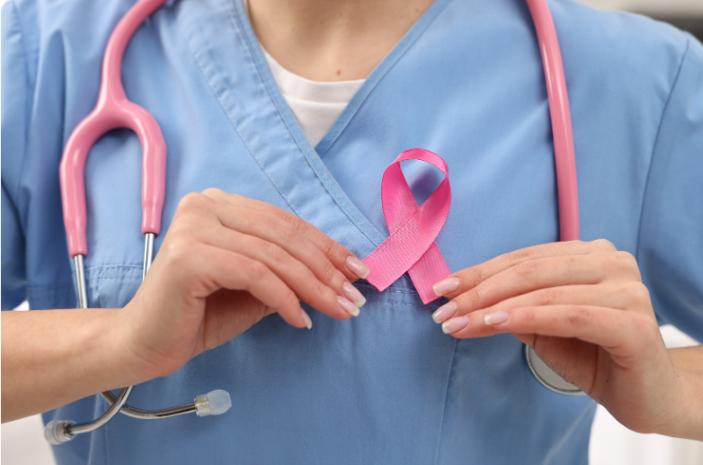

MD Hannah Brandts Diagnostic Imaging
It’s important to know the facts about breast cancer, personal risks, and early detection. Your primary care provider and the Breast Health team work together to help you understand your risks and stay on track with screenings. When cancer is caught early, successful treatment is more likely.
Q: Do Underwire bras, antiperspirants, and stuffing your cell phone in your bra cause breast cancer?
A: No bras cause breast cancer, including underwires. In addition, going braless does not lower the risk of breast cancer. However, it is a good idea to make sure your bra is comfortable, fits well, and matches your activities. Likewise, studies on cell phones show no link to cancer, but scientists continue to study potential impacts. When it comes to deodorant, The American Cancer Society reports no conclusive evidence linking underarm antiperspirants or deodorants to breast cancer.
Q: What factors raise the risk for breast cancer?
- Being a woman
- Personal or family history of breast or ovarian cancer
- Dense breast tissue seen on a mammogram
- Personal history of a breast biopsy with a high-risk lesion found
- Age over 30 at first full-term pregnancy
- No history of full-term pregnancy
- Ashkenazi Jewish ancestry
- Black American ancestry
- Chest radiation therapy between the age of 10 and 30
- Smoking
- More than one alcoholic drink a day
- Being overweight
Q: At what age should a woman begin having mammograms?
A: That depends. We recommend annual screening mammograms for women of average risk beginning at age 40. Women at high risk should begin annual mammograms at age 30. Understanding your risk often begins at well women visits with your primary care provider or gynecologist by gathering information on your personal and family history.
Mankato clinic follows the guidelines of the American College of Radiology. We also use the Tyrer-Cuzick model to calculate an individual’s risk score. For women with a high-risk score, we recommend an annual screening breast MRI beginning at age 25 and annual screening mammograms starting at age 30. After turning 30, it’s best to alternate the two screenings every 6 months.
Q: Are women with bigger breasts more likely to get breast cancer?
A: No. There is no link between breast size and cancer risk. However, breast density does play a role. Breast density is the proportion of dense glandular tissue to fatty tissue in the breast. Having a high percentage of dense breast tissue, which can be measured on a mammogram, can raise the risk of developing breast cancer. To get the most accurate measurement, Mankato Clinic uses artificial intelligence to evaluate breast density on mammograms.
Q: What should you do if you find a lump?
A: All lumps are not breast cancer. All lumps should be evaluated by a healthcare professional. Contact your primary care provider or OB/GYN for a clinical breast exam. Additional imaging, such as a mammogram, may be recommended.
If you experience symptoms such as swelling, changes in the nipple, discharge, swollen lymph nodes or pain, let your healthcare provider know right away as well.
We encourage breast self-awareness. Know how your breasts normally look and feel.
Q: Can men get breast cancer?
A: Yes, but it’s very rare. According to the American Cancer Society, roughly 1 in 726 men will develop breast cancer in their lifetime. Signs and symptoms are a lump or swelling, skin dimpling or puckering, nipple turning inward, redness or scaling, discharge from the nipple. If you notice any changes in your breast tissue, contact your healthcare provider.
Contact your primary care provider to see if you are due for a mammogram. You may also schedule a screening mammogram here.
Most health insurance plans cover regular mammograms. Call the number on the back of your insurance card to check your coverage.